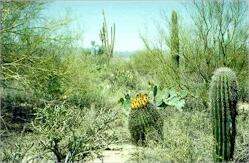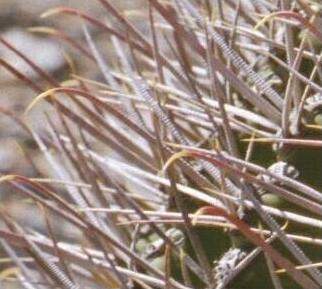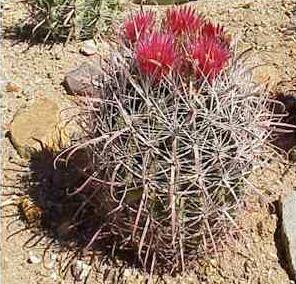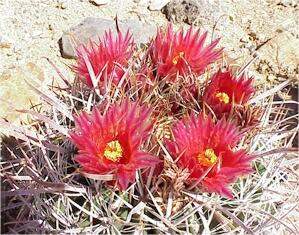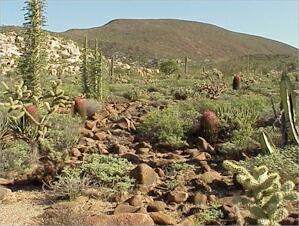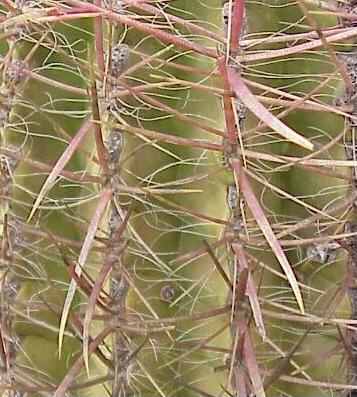BARREL CACTI (Ferocactus species) The large barrel cacti (genus Ferocactus) are recognisable by their thick, barrel shape and their stout spines, which in some species are strongly hooked. These are slow-growing plants, reaching ages of 100 years or more. They grow to at least 30 cm tall at maturity, but usually reach a height of 1 metre or even 3 metres. They typically form single stems, without branching. There are 25 species of Ferocactus, 9 of which are found in the Sonoran Desert of Arizona and Mexico.
The fishhook barrel (Ferocactus wislizenii), also known as the Arizona barrel, is common in south and central Arizona, and southwest New Mexico, as a component of the gravelly, gently sloping, saguaro-dominated desert regions. It often is seen with a ring of yellow fruits, which persist near the top of the plant until they are eaten by birds, deer or javelina. This plant is also known as the compass barrel because it tends to lean towards the southwest - a feature that would help to reduce exposure to the intense sunlight from this direction in the hottest part of the day. Sometimes this cactus leans so far that it topples under its own weight. It is quite frost tolerant, so it also can grow in the mountains above the desert regions of southern Arizona.
The spines of this species are greyish or red coloured, extremely strong, and with pronounced banding patterns along their length. Many of the radial spines are straight, but the central spines of each areole have extremely sharp, curved tips.
Some other barrel cacti have strap-like, grey central spines that surround the body of the plant like a cage and that serve to intercept much of the direct, intense sunlight, as seen in the images below. Like all the large barrel cacti, these produce flowers quite close to the growing tip of the plant.
The Baja California peninsula of Mexico has several other types of barrel cactus, some of which grow on the steeper, rocky slopes or in boulder fields of the central region. These barrel cacti tend to be more slender and appear more columnar than the Arizona barrel. Several examples are seen as the red-topped columnar plants growing with other large cacti and boojum trees in the image below. The colour of this barrel is conferred by the red spines. In this cactus, also, the spine-bearing ribs form spirals up the plant. This must reflect the way in which the meristem grows, and presumably it helps to offset any tendency for the plant to lean in one direction like the Arizona barrel.
GO TO: |
